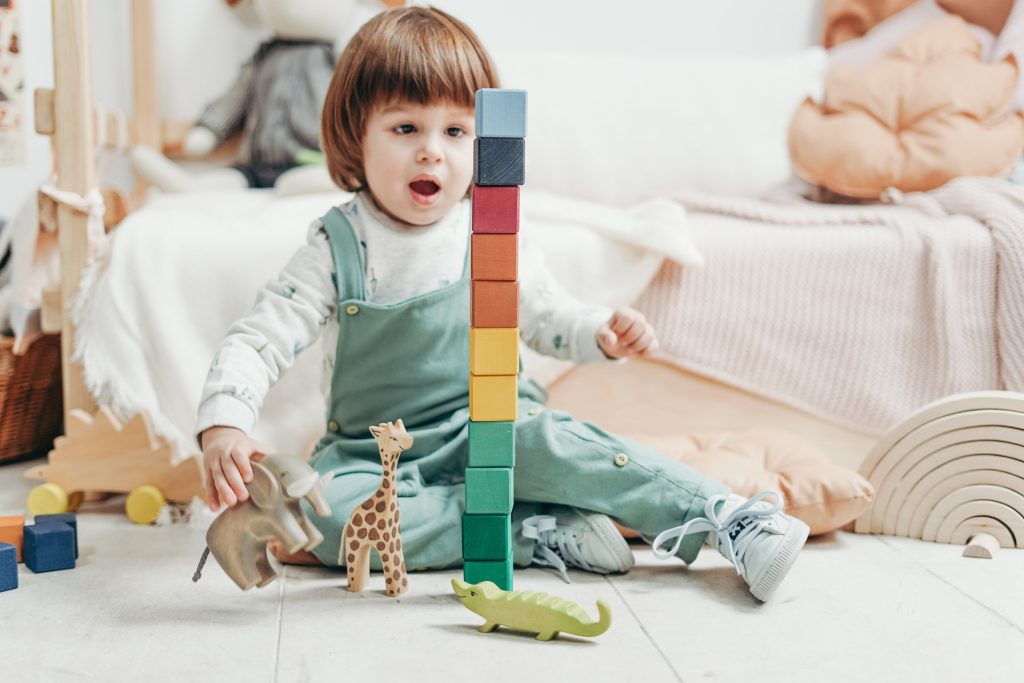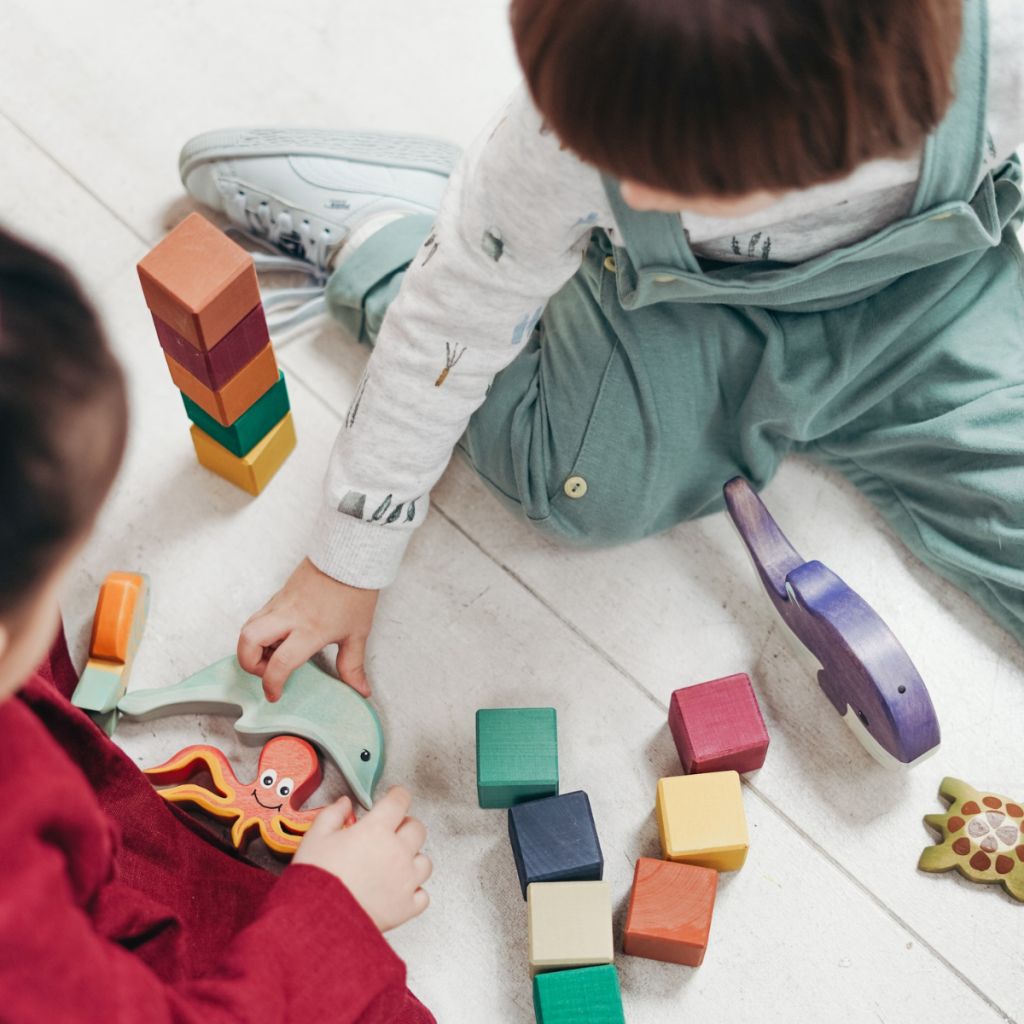Discover effective strategies and techniques for teaching problem-solving skills to 2-3 year old children.
How to Teach Problem-Solving to 2-3 Year Old Children
Hello there, parents and caregivers! Are you ready to embark on an exciting journey of teaching problem-solving skills to your 2-3 year old children? Well, grab your thinking caps because we’re about to dive into the wonderful world of early childhood cognitive development!
Understanding the Importance of Problem-Solving Skills in Early Childhood
Before we jump into the strategies and techniques, let’s take a moment to appreciate the significance of problem-solving skills for our little ones. Problem-solving is not just about finding solutions to puzzles or riddles; it plays a crucial role in their overall cognitive development. By encouraging problem-solving from an early age, we’re helping our children develop critical thinking, creativity, and decision-making abilities that will benefit them for a lifetime.
When children engage in problem-solving activities, they are not only exercising their brains but also developing important neural connections. These connections pave the way for future learning and problem-solving abilities. Just like physical exercise strengthens our muscles, problem-solving exercises strengthen the cognitive muscles of our children’s brains. So, let’s get those mental muscles flexing!

The Role of Problem-Solving in Cognitive Development
Problem-solving is like a workout for your child’s brain. It challenges them to think creatively, analyze situations, and come up with solutions. As they grapple with problems, their brains develop important neural connections that pave the way for future learning and problem-solving abilities. So, let’s get those mental muscles flexing!
When children engage in problem-solving activities, they are not only exercising their brains but also developing important neural connections. These connections pave the way for future learning and problem-solving abilities. Just like physical exercise strengthens our muscles, problem-solving exercises strengthen the cognitive muscles of our children’s brains. So, let’s get those mental muscles flexing!
Benefits of Early Problem-Solving Skills
Teaching 2-3 year olds problem-solving skills doesn’t just promote cognitive development; it also equips them with essential life skills. When children are able to solve problems independently, they gain confidence and a sense of empowerment. They learn that they have the ability to overcome obstacles, which sets them up for a lifetime of resilience and success. Plus, problem-solving skills have a positive impact on social and emotional development. It helps children develop patience, empathy, and the ability to work collaboratively with others. Talk about a win-win!
Problem-solving skills not only benefit children academically but also in their everyday lives. Imagine your child encountering a problem at the playground. With problem-solving skills, they can assess the situation, come up with possible solutions, and choose the best course of action. This ability to think critically and make decisions will serve them well as they navigate through various challenges in life.
Furthermore, problem-solving skills foster creativity in children. When faced with a problem, they are encouraged to think outside the box and explore different possibilities. This creative thinking not only helps them find solutions but also nurtures their imagination and innovation. Problem-solving becomes an avenue for self-expression and originality.
Another benefit of early problem-solving skills is the development of resilience. When children encounter obstacles or setbacks, they learn to persevere and find alternative solutions. They understand that failure is not the end but an opportunity to learn and grow. This resilience becomes a valuable asset as they face future challenges, both big and small.
Lastly, problem-solving skills promote social and emotional development. When children engage in problem-solving activities with their peers, they learn to communicate effectively, listen to others’ perspectives, and work collaboratively towards a common goal. This fosters empathy, patience, and understanding, essential qualities for building positive relationships and navigating social interactions.
Recognizing the Problem-Solving Abilities of 2-3 Year Olds
Now that we understand why teaching problem-solving skills is essential, let’s explore how problem-solving manifests in 2-3 year olds and the typical cognitive milestones they reach at this age.

Typical Cognitive Milestones at this Age
At this stage, your little one is like a little sponge, soaking up knowledge and experiences. They are developing their language skills rapidly and have a growing understanding of how the world around them works. They are curious, observant, and love exploring their surroundings. This curiosity is the perfect foundation for building problem-solving skills!
As your child reaches the age of 2-3, they begin to exhibit a variety of cognitive milestones that showcase their problem-solving abilities. One of the most noticeable milestones is their ability to imitate actions and behaviors. You may find your little one mimicking your actions, such as pretending to talk on the phone or feeding a doll. This imitation not only demonstrates their problem-solving skills but also their ability to observe and replicate actions.
Another cognitive milestone that emerges during this period is symbolic play. Your child may start using objects to represent something else, like using a block as a phone or a spoon as a drumstick. This type of play shows their growing imagination and problem-solving abilities as they use objects in unconventional ways.
Furthermore, 2-3 year olds begin to understand the concept of cause and effect. They experiment with different actions to see what happens, such as dropping a toy to observe it fall or pushing a button to make a sound. This exploration of cause and effect is a crucial aspect of problem-solving, as it allows them to understand the relationship between actions and outcomes.
How Problem-Solving Manifests in Toddlers
Ever watched your toddler figure out how to stack blocks or fit puzzle pieces together? That’s problem-solving in action! They may not be solving complex mathematical equations (yet!), but they are already flexing those problem-solving muscles. They experiment, make connections, and learn cause and effect. And it’s this innate curiosity that we can tap into to foster their problem-solving abilities.
Problem-solving in toddlers goes beyond simple puzzles and block stacking. It extends to their daily activities and interactions with the world around them. For example, when faced with a toy that requires assembly, your little one may attempt to put the pieces together, trying different combinations until they find the right fit. This trial-and-error approach demonstrates their problem-solving mindset and their determination to find a solution.
Additionally, problem-solving can be observed in their social interactions. Toddlers often encounter conflicts or challenges when playing with others. They may need to negotiate, compromise, or find alternative solutions to resolve these conflicts. These social problem-solving skills are essential for building positive relationships and developing empathy.
Furthermore, problem-solving manifests in toddlers through their ability to adapt and overcome obstacles. They may encounter a situation where their initial approach doesn’t work, but instead of giving up, they find alternative strategies to achieve their goal. This flexibility and resilience in problem-solving are valuable skills that will benefit them throughout their lives.
Strategies for Teaching Problem-Solving to Toddlers
Ready to roll up your sleeves and dive into some hands-on strategies for teaching problem-solving? Here are a few playful and effective techniques you can use:
Incorporating Problem-Solving in Play
Play is a powerful vehicle for learning. Set up play scenarios that require problem-solving, such as building a tower with blocks or creating a pretend “obstacle course” in your living room. Encourage your child to find solutions, experiment, and think outside the box. The more opportunities they have to problem-solve in a playful way, the more they’ll develop these skills naturally.
When engaging in play-based problem-solving activities, it’s important to provide your toddler with open-ended materials. This allows them to explore different possibilities and come up with creative solutions. For example, instead of giving them a set of instructions for building a tower, provide them with various shapes and sizes of blocks and let them figure out how to construct a stable structure. This type of hands-on exploration helps toddlers develop critical thinking skills and boosts their problem-solving abilities.
Using Everyday Situations as Learning Opportunities
Problem-solving is not limited to specific activities; it can be woven into everyday situations. For example, involve your child in simple decision-making processes, like choosing what to wear or what snack to have. Encourage them to think about different options and weigh the pros and cons. By involving them in decision-making, you’re giving them valuable problem-solving practice.
Additionally, you can create problem-solving opportunities during daily routines. For instance, during mealtime, ask your toddler to figure out how to use a spoon to eat their food independently. This not only enhances their problem-solving skills but also promotes their self-confidence and autonomy. By incorporating problem-solving into daily life, you’re helping your toddler develop a mindset that embraces challenges and seeks solutions.
Guiding Your Child Through Problem-Solving Steps
While fostering independence is important, sometimes our little ones need a helping hand. When faced with a problem, guide your child through the problem-solving steps: identify the problem, brainstorm possible solutions, evaluate the options, and decide on the best course of action. By providing guidance, you’ll give them a framework to navigate problem-solving effectively.
When guiding your toddler through problem-solving steps, it’s crucial to ask open-ended questions that encourage critical thinking. For example, if they are struggling to put together a puzzle, instead of immediately showing them the correct way, ask questions like “What piece do you think might fit here?” or “How can you try a different approach?” This approach promotes their problem-solving skills and helps them develop resilience and perseverance.
Furthermore, it’s essential to create a supportive environment where mistakes are seen as learning opportunities. Encourage your toddler to embrace challenges and not be afraid to make mistakes. By fostering a growth mindset, you’re instilling in them the belief that they can overcome obstacles and find solutions.
Fostering a Problem-Solving Environment at Home
Problem-solving isn’t just about specific activities; it’s a mindset. Foster a problem-solving environment in your home by embracing these strategies:
Encouraging Curiosity and Exploration
Cultivate a sense of wonder in your child by encouraging them to explore the world around them. Provide them with opportunities to ask questions, make observations, and discover new things. By nurturing curiosity, you’ll lay the foundation for a lifelong love of learning and problem-solving.
Promoting Independent Thinking
Give your child space to think and make decisions on their own. Let them solve simple puzzles, discover how to get dressed, or figure out how to put their toys away. By promoting independent thinking, you’re fostering problem-solving skills while boosting their self-confidence.
Nurturing Persistence and Patience
Problem-solving doesn’t always happen right away. Teach your child the value of persistence and patience. Encourage them to keep trying even when faced with setbacks. Remind them that it’s okay to make mistakes and that every problem is an opportunity to learn and grow.
Dealing with Challenges in Teaching Problem-Solving
As with any journey, there will be challenges along the way. Let’s explore some common hurdles and how to overcome them:
Addressing Frustration and Setbacks
Problem-solving can be frustrating, even for adults. Help your child navigate these emotions by providing emotional support and guidance. Encourage them to express their feelings, and offer reassurance that problem-solving takes time and practice. Together, you can work through the challenges and celebrate the victories!
Balancing Guidance and Independence
While it’s important to provide guidance, it’s equally crucial to foster independence. Find the balance between offering support and allowing your child to think and solve problems independently. By doing so, you’ll empower them to become confident problem solvers.
So there you have it, parents and caregivers – a playful guide to teaching problem-solving skills to your 2-3 year old children. Remember, problem-solving is not just about finding solutions; it’s about fostering curiosity, resilience, and independent thinking. Embrace the adventure, celebrate the “a-ha!” moments, and watch your little problem solvers shine!



